Building foundations of tomorrow
Diaphragm wall construction in India is the building of reinforced concrete walls that are constructed in the ground using an under-slurry technique. This basement diaphragm wall technique involves excavating a narrow trench that is kept full with an engineered fluid or slurry. This slurry helps to prevent the sides of the trench from collapsing and it also provides a barrier against groundwater. Once the trench is excavated, the concrete is pumped in and allowed to harden.
Also known as D-walls, they are commonly used in the construction of deep basement diaphragm wall construction in India and other structures that require a strong and stable foundation. They are also used to prevent soil erosion and to control groundwater levels. Heritage Infraspace, as an Ahmedabad-based diaphragm wall construction company in India, offers a wide range of basement construction services helping clients design, engineer and construct a diaphragm wall that meets the specific needs of the structure.
Diaphragm wall construction is a fairly new methodology of basement diaphragm wall construction and can be used in a variety of soil conditions. They are very strong and durable and can be installed close to existing structures.
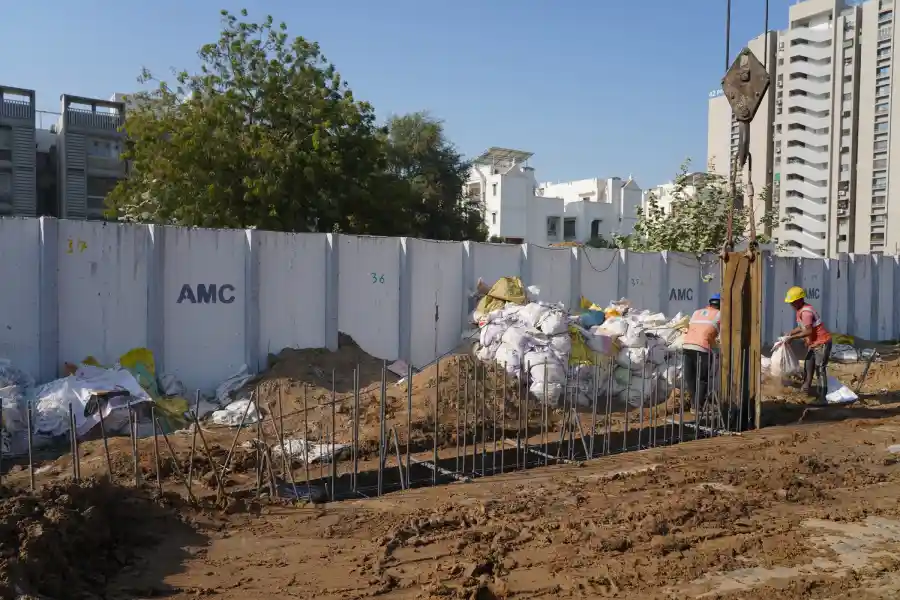
The process of diaphragm wall construction
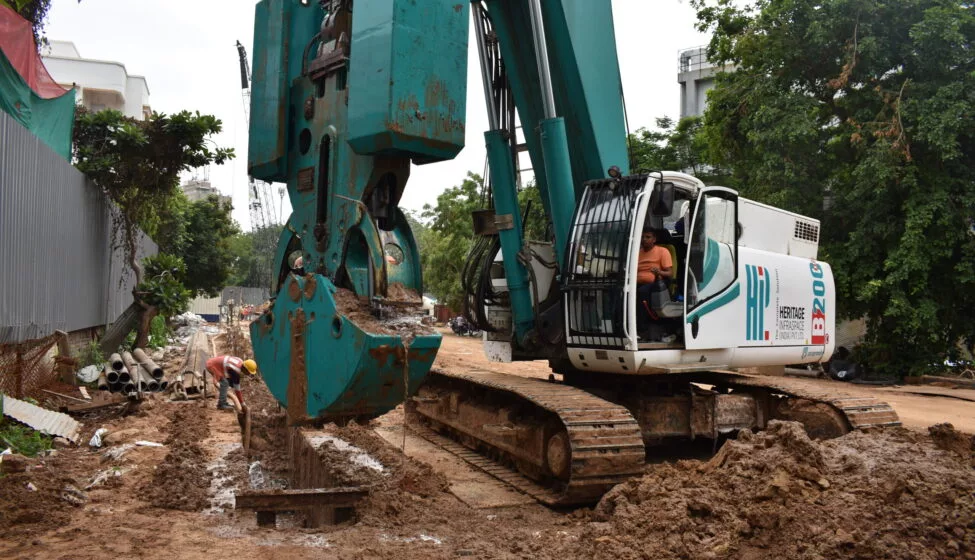
- Stage 1: Fixing of Alignment – Establishing the correct position and alignment of the diaphragm wall using surveying techniques and marking it on the ground.
- Stage 2: Guide Wall Construction – Building temporary guide walls on both sides of the planned excavation area to ensure accurate trenching and support during diaphragm wall construction.
- Stage 3: Trenching – Excavating the trench along the marked alignment to the desired depth and width for the diaphragm wall.
- Stage 4: Trench Cleaning – Removing loose soil and debris from the trench to create a clean surface for the next steps.
- Stage 5: Stop ends fixing – Installing temporary stop ends at the bottom of the trench to prevent concrete from flowing out during placement.
- Stage 6: Reinforcement Cage lowering -Lowering and placing a steel reinforcement cage into the trench, providing strength to the diaphragm wall.
- Stage 7: Placing of Concrete -Pouring concrete into the trench, filling it to the required level and ensuring proper compaction.
- Stage 8: Withdrawal of Stop ends -Removing the temporary stop ends after the concrete has cured sufficiently.
- Stage 9: Excavation and Anchoring -Excavating the area behind the completed diaphragm wall and installing anchors or supports if necessary for stability.
- Stage 10: Stressing and Final Level of Excavation -Applying stress to the anchors and adjusting the final level of excavation to ensure the desired structural integrity and ground stability for diaphragm wall construction in India.
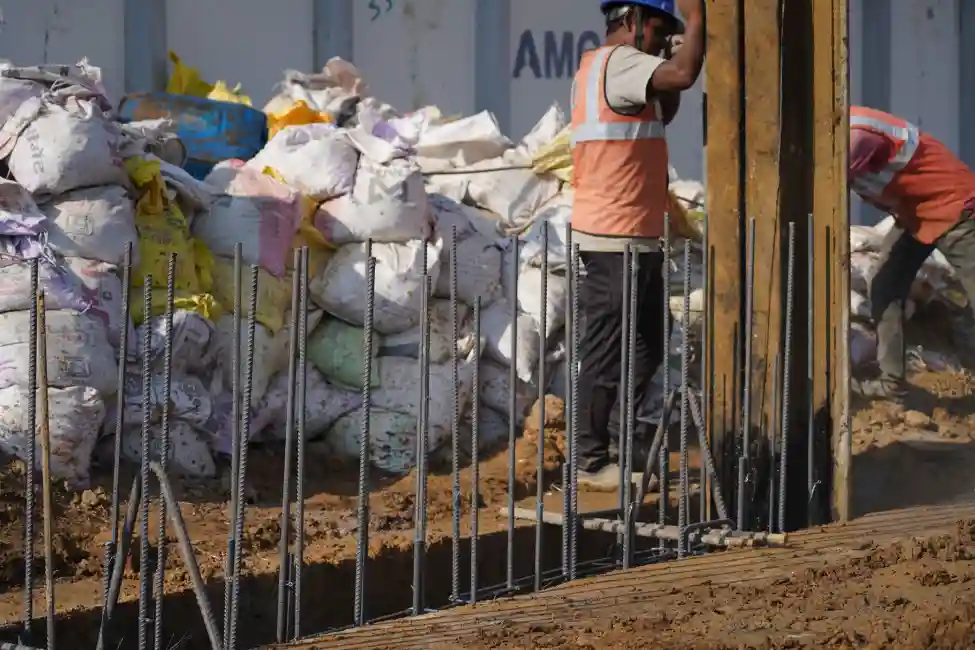
These stages provide a general overview of the construction process by HIPL when compared to a piling construction company for a diaphragm wall.
Quality control measures during diaphragm wall construction
Quality control measures during diaphragm wall construction in India involve several important steps:
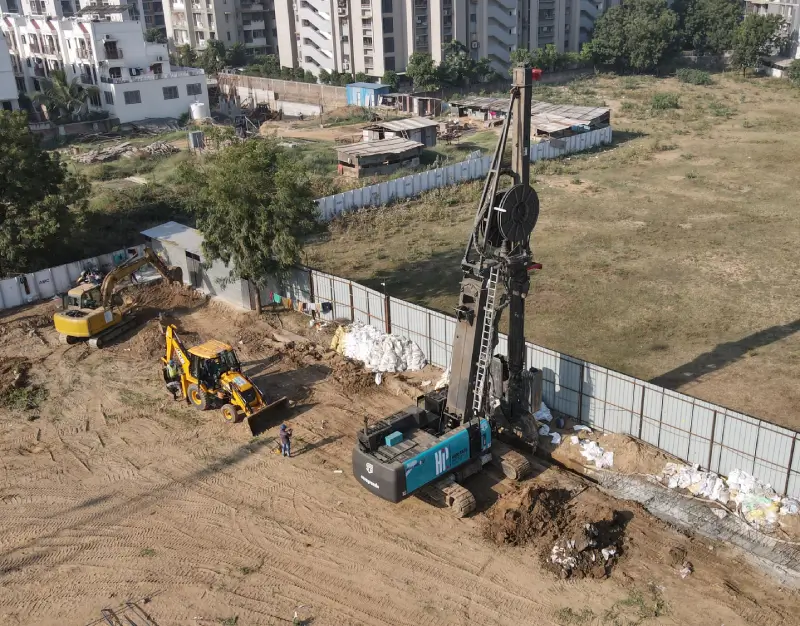
- Material testing ensures that concrete and reinforcement bars meet required standards. Tests include slump tests and strength tests for concrete and checks for dimensions and properties of reinforcement bars.
- Excavation control monitors dimensions and verticality of the wall, using inclinometers and surveying equipment.
- Reinforcement installation is inspected to verify proper positioning and alignment of reinforcement cages.
- Tremie concrete placement is supervised, checking flow rate and consistency and conducting slump tests and temperature monitoring.
- Wall construction is visually inspected for defects and includes non-destructive testing techniques.
- Concrete curing is carefully managed to optimize hydration and check on strength development.
- Backfilling and groundwater control are implemented using appropriate techniques and materials and groundwater levels are monitored.
- Documentation includes maintaining records of quality control activities, test results, inspections and any deviations or corrective actions.
These measures taken by a diaphragm wall construction contractors in India ensure compliance with specifications, standards and regulations, ensuring the diaphragm wall’s integrity and durability.
Advantages of diaphragm walls
The diaphragm wall construction offers several advantages over other wall construction methods.
- With fewer joints compared to a secant wall, it enhances water tightness.
- Its exceptional strength makes it ideal for supporting deep excavations, while the construction process is quiet and vibration-free.
- Diaphragm wall construction company can construct diaphragm walls to great depths, exceeding 80m and can be built using various types of rocks and soil.
- As a watertight structure, it minimally impacts surrounding structures as there is no need for dewatering.
- Additionally, the wall serves as both the foundation for the superstructure and the exterior wall for the basement, providing a multi-functional solution.
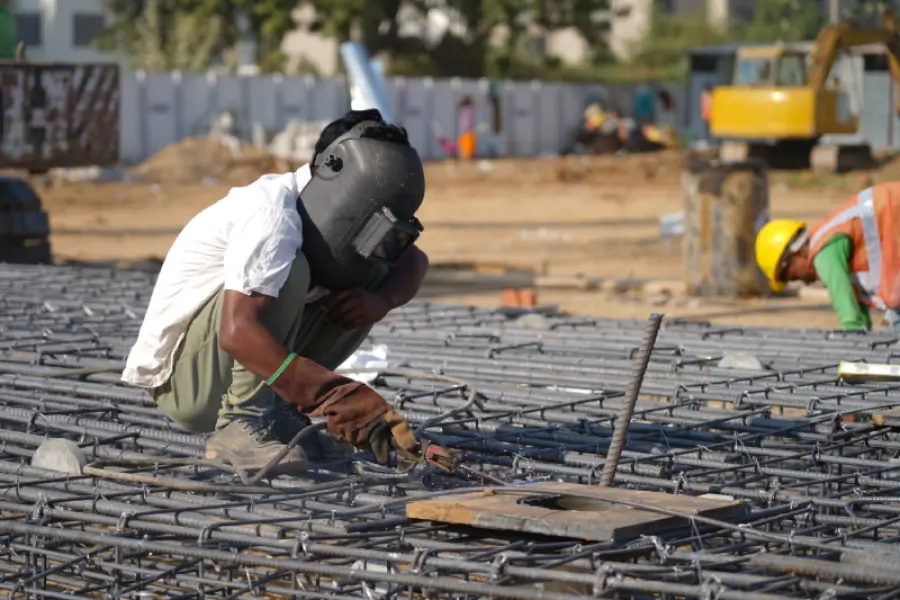
These advantages make diaphragm walls constructed by HIPL – a diaphragm wall construction company and an RMC supplier in India, a preferred choice in many large-scale civil engineering projects where structural integrity, water-tightness and versatility are essential considerations.
Solutions we provide
The construction of basement diaphragm walls in India is gaining momentum and we provide solutions to cater to the same.
Diaphragm wall construction in congested spaces: Diaphragm walls are used to create strong, impermeable barriers in congested areas. They involve excavating a trench and installing interlocking concrete panels or slurry walls. Diaphragm walls provide structural support, prevent groundwater ingress and are used in deep excavations like basements and tunnels. This solution optimises land usage and ensures stability of nearby structures.
Soil management: Soil management minimises soil movement and settlement near existing structures. It involves monitoring soil conditions, using appropriate foundation systems and implementing ground improvement techniques. Proper soil management safeguards neighboring buildings during excavation and construction.
Advanced excavation rigs: These rigs enable timely and effective project execution. They offer high-performance capabilities, precision and versatility. Casagrande rigs perform excavation and foundation works, including digging, drilling and pile driving. Their hydraulic systems, telescopic booms and rotating heads allow for efficient operations in different soil conditions. These rigs enhance productivity, reliability and adherence to project schedules while maintaining quality standards.
The solutions offered by HIPL, a leading construction company in India, ensure efficient and reliable execution of projects while prioritising land optimisation, structural stability and maintaining high-quality standards.
Frequently Asked Questions
Yes, diaphragm walls are typically waterproof when constructed properly. They are made of concrete, which is a watertight material. In addition, the joints between diaphragm wall panels are sealed with waterstops to prevent water from seeping through. Diaphragm walls are often used in top down construction, where the basement floors are constructed as the excavation progresses. This means that the diaphragm walls must be waterproof to prevent water from entering the basement during construction.
Diaphragm walls can be expensive to construct. Diaphragm walls can only be used in relatively soft soils. If the soil is too hard, it will be difficult to excavate the trench for the diaphragm wall..
The minimum thickness of a diaphragm wall depends on the soil conditions and the height of the wall. In general, the thickness of a diaphragm wall should be at least 0.5 meters (1.6 feet). However, in some cases, the thickness may need to be even greater.



